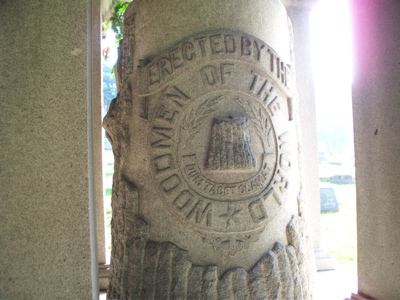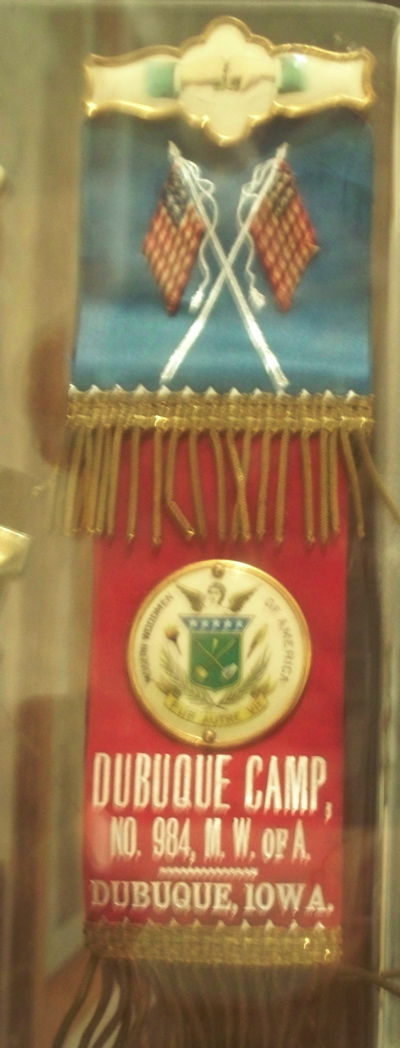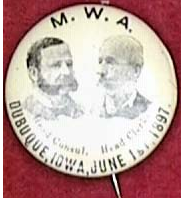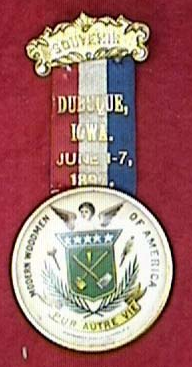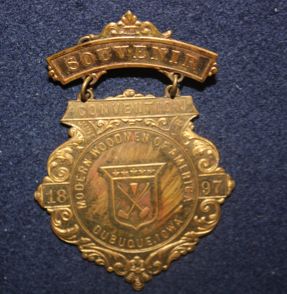Encyclopedia Dubuque
"Encyclopedia Dubuque is the online authority for all things Dubuque, written by the people who know the city best.”
Marshall Cohen—researcher and producer, CNN
Affiliated with the Local History Network of the State Historical Society of Iowa, and the Iowa Museum Association.
MODERN WOODSMEN OF AMERICA
MODERN WOODMEN OF AMERICA. On June 6, 1890 the organization was started by Joseph Cullen Root who was said to have been inspired by a pastor in Lyons (Clinton), Iowa who spoke of the virtues of the "woodmen" who cut down trees to build communities. Symbols of the organization were the axe, mallet, and wedge representing industry, power, and progress.
At first, the organization protected a member's family wih a death benefit after the breadwinner died. Members were also offered a cemetery marker in many varieties. The organization provided a pattern. The stones were carved by local carvers or by carvers near Indiana's Bedford limestone mines. These were then shipped to the residence of the family for the addition o names and dates. Many markers carried a round medallion with the WOW motto, Dum tacet clamat--"Through silence he speaks." Due to the expense, the monuments were discontinued around 1920.
Woodmen of America provided financial solutions to approximately 800,000 members in the United States. These included life insurance and annuities, cancer insurance, and access to mutual funds, 529 College Savings Plans and other financial services. Members are also eligible to receive a wide variety of fraternal benefits. These included participation in a youth program, a camping experience for youth and senior members, disaster relief assistance, a prescription drug discount card, and monetary support for members' orphaned children. Another part of the organization's patriotic mission was the annual "In Honor and Remembrance" program, which paid tribute to the heroes and victims of the September 11th attacks.
---
Source:
1. Mary Christopher and Rowley, Mike, Woodland Cemetery in Des Moines--A History, The History Press, Des Moines, 2024, p. 32


